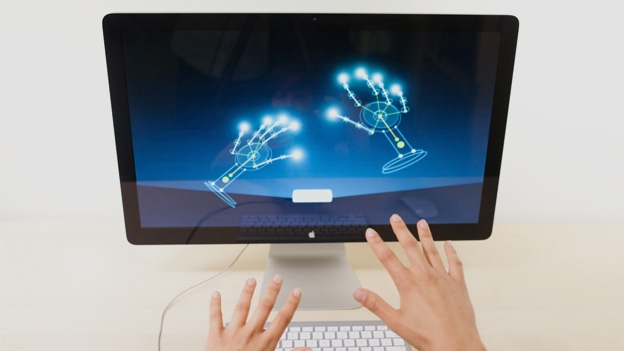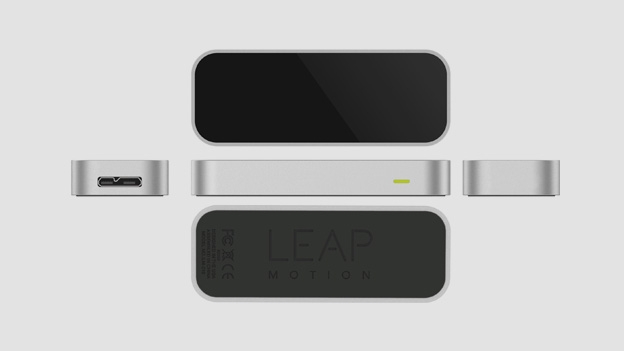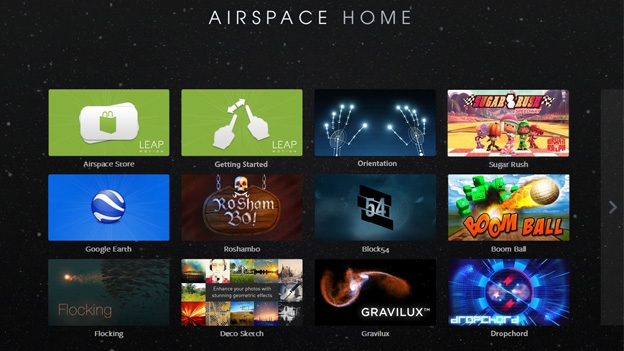Leap Motion review
The touchless Leap Motion controller has arrived

-
+
Amazing proof of concept
-
+
Cool design
-
+
Accessible price
-
-
Inconsistent gesture controls
-
-
Lack of apps
-
-
Tired arms
Why you can trust T3




For less than £80, the Leap Motion controller offers a glimpse of a future where we all control computers without touching a thing
Hotly anticipated since its announcement back in May 2012, the Leap Motion is a controller like no other. Oh, ok, it's a bit like one other, the Kinect. But if Microsoft's limb-mapping peripheral is designed for full-body gaming from metres away, the Leap Motion is designed for much more up-close and personal computing, using just your hands.
Leap Motion: Size & build
The device itself is barely bigger than a packet of gum. Measuring 76mm long, 30mm wide and a mere 13mm high, the inoffensive brushed aluminium and black-glass shell will blend in next to anything iMac-like.
Leap Motion: Setup
Setting up the Leap Motion is as easy as plugging in the USB and downloading some software. Given the seven- month delay in bringing the Leap Motion to market we were pretty eager to get started. Three run-throughs of the tutorial and we'd finally graduated from aimless finger jabbing to drawing tentative shapes and beginning to visualise the virtual window now within our grasp.
The Leap Motion's three infrared eyes and dual cameras give you virtual control of a modest space hovering somewhere over and in front of your keyboard. It tracks your wrists, hands and all ten fingers with a claimed precision of 0.001mm. Our rulers don't go down that far but, while you're still learning to use the Leap Motion, 'precision' won't be the first word springing to mind.
For a start, there's no universal set of gestures. Some apps use a finger jab for a click, others come up with their own methods. It takes away from what should be an unthinking, intuitive experience. And while the Leap Motion generally does a good job of keeping track of all ten of our digits, it can have an annoying tendency to lose them if you hold your hand at the wrong angle.
Leap Motion: Content
Both OS X and Windows are catered for but the Leap Motion won't let you control either out of the box. Instead you'll be confined to apps from the Airspace Store. It boasts 75 launch titles but while spinning round a 3D molecule model or taking apart an intricately detailed human skull with your bare hands can be fun, we sense there's more to come from developers than this.
Google Earth is one of the small number of mainstream apps to make it on there. Promo videos show nimble fingered Californians zipping around the globe with intuitive hand-waving ease. We found it maddeningly sensitive – sending you spinning into space with the merest gesture – but satisfying to use once mastered.
Get all the latest news, reviews, deals and buying guides on gorgeous tech, home and active products from the T3 experts
Leap Motion: Games
On the gaming front, Cut The Rope is surprisingly addictive in air-slashing form but can't quite live up to the accuracy of actually touching ropes on an iPad or phone screen. Virtual flight apps nail the interface better but most games fall into the psychedelic experimental category - to varying effect.
Leap Motion: Verdict
In creating the Leap Motion the designers began with the idea of making modelling virtual 3D clay as easy as modelling clay in the real world. We think that's where Leap Motion's future lies – in innovative 3D applications not yet dreamt of. Till then it hovers somewhere between gimmicky toy and impressive proof of concept – but at a price that screams 'buy me anyway'.
Leap Motion release date: out now
Leap Motion price: £76.98